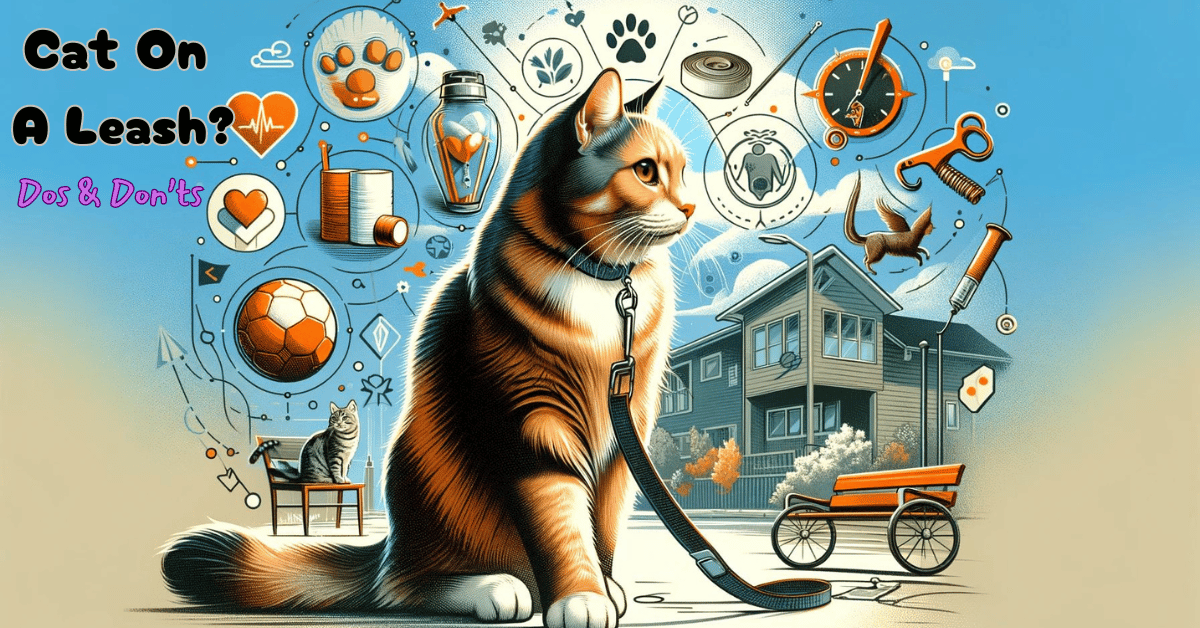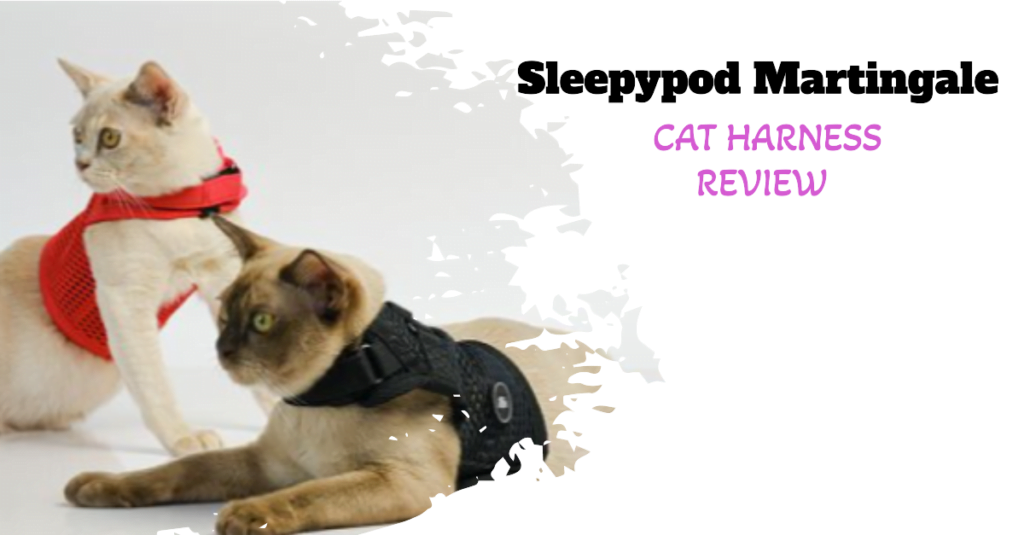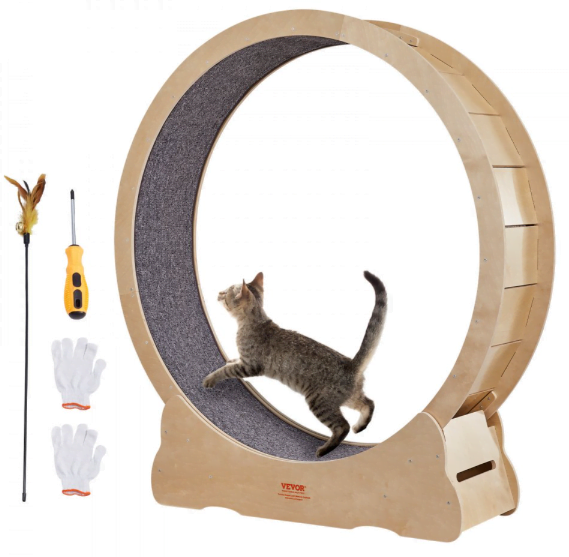This post contains affiliate links and I will be compensated if you make a purchase after clicking on my links.
Embarking on Leashed Adventures: Is It for Your Cat?
Many wonder about the possibility of putting a cat on a leash for outdoor adventures, seeking a straightforward response and deeper insights into the process.
The short answer is yes, with the right approach and considerations, it’s possible to safely explore the great outdoors together. However, it’s important to recognize that not all cats are suited for leash walks.
This post aims to guide you through determining if this activity fits your feline’s personality and how to prepare for it, ensuring a positive experience for both you and your cat.
Putting a Cat on a Leash: The Safety vs. Independence Debate

Opinions vary widely among pet owners, veterinarians, and animal welfare organizations, with some highlighting the potential for enhanced physical activity and mental stimulation, while others caution against the stress and safety risks involved.
The key lies in balancing these outdoor excursions with thoughtful consideration of the cat’s comfort and stress levels. When approached with care, leashing can offer a safe avenue for exploration without compromising a cat’s cherished autonomy.
Put a Cat on a Leash: Dos and Don’ts at a Glance
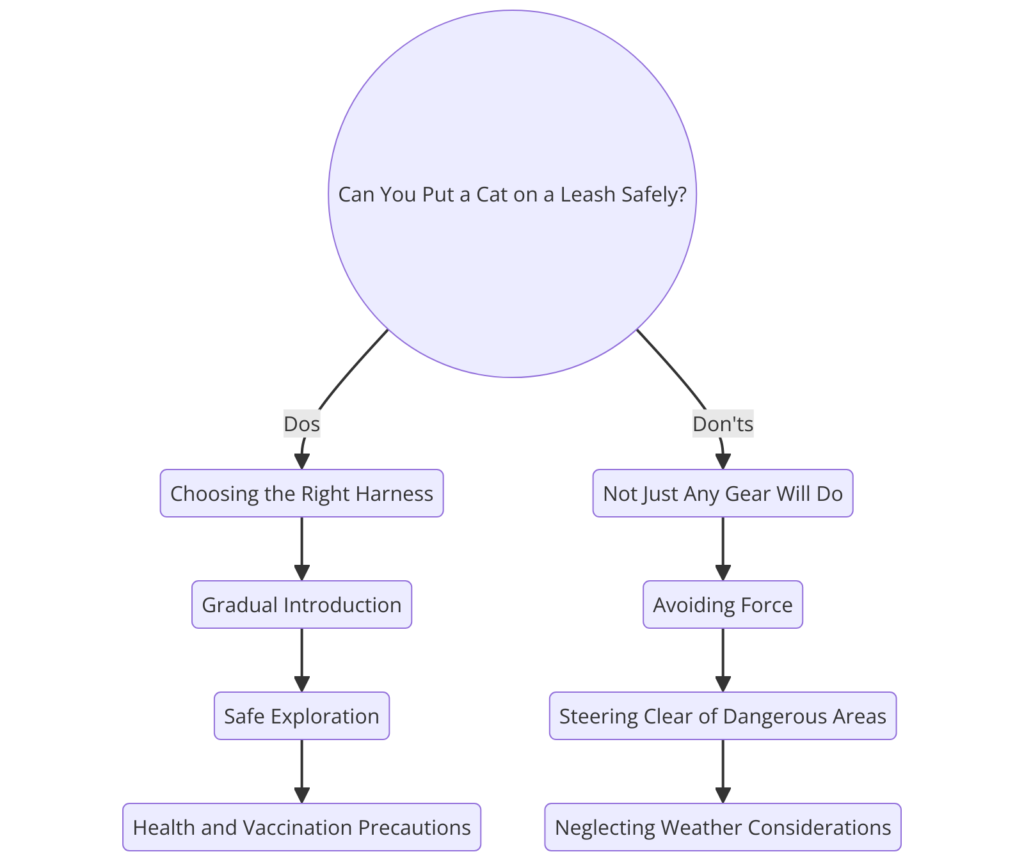
The Dos of Putting a Cat on a Leash

1. Choosing the Right Harness
The journey into the great outdoors starts with the perfect harness – one that’s crafted with your cat’s comfort, fit, and Houdini-esque escape skills in mind.
Look for a harness that snugly fits without pinching or restricting movement, ensuring it’s specifically designed for cats. Features like adjustable straps and soft, breathable materials make for a happy, comfortable feline adventurer.
2. Gradual Introduction
Like introducing cats to any new experience, patience is key. Start by letting your cat wear the harness indoors, sans leash, allowing them to get used to its feel in a familiar environment.
Gradually increase the wear time, adding the leash and encouraging exploration around the house before bravely stepping outside. Without proper leash and harness training, no cat will be happy to walk on a leash.
3. Safe Exploration
Your first outdoor adventures should be in quiet, enclosed areas to minimize stress and risk. Observe your cat’s behavior closely for signs of discomfort or curiosity, and always keep a gentle, reassuring presence. These initial outings are less about distance covered and more about positive experiences and confidence building.
4. Health and Vaccination Precautions
Ensure your cat is up-to-date on vaccinations and protected against fleas, ticks, and other parasites. A healthy cat is a happy explorer, ready to take on the world—one cautious step at a time.
The Don’ts of Putting a Cat on a Leash

1. Not Just Any Gear Will Do
When it comes to leashing up for an adventure, skipping the harness and opting for a collar-attached leash is a feline fashion faux pas that can lead to discomfort or even injury.
Cats aren’t just small dogs, and their harnesses shouldn’t be either. A cat-specific harness is designed to accommodate their unique shape and movements, ensuring a snug yet comfortable fit.
While the leash itself might be interchangeable with those used for dogs, choosing the right leash is still an important factor for your cat’s safety and comfort.
2. Avoiding Force
If there’s one thing cats have taught us, it’s that they do things in their own time. Never force your cat into a harness or on walks. If they’re not taking to it, pause and revisit later. Observing your cat’s cues is crucial; respect their pace and preference.
3. Steering Clear of Dangerous Areas
The great outdoors is not without its perils. High traffic areas, loud environments, and the presence of off-leash dogs can turn an adventure sour.
Opt for calm, controlled settings where you can safely manage the situation, ensuring your cat’s outdoor experiences are positive and secure.
4. Neglecting Weather Considerations
Cats, like us, prefer their adventures in comfortable weather. Extreme heat, cold, or wet conditions are not only unpleasant but can pose health risks. Always consider the forecast before planning your outdoor excursions, aiming for mild and dry conditions for the most enjoyable experience.
The Good of Walking Your Cat on a Leash
1. Physical Exercise
Leash walking serves as a pawsome way to keep your cat agile and fit. It’s a purrfect solution for managing weight and enhancing overall health, offering a much-needed physical outlet for those zoomies.
2. Mental Stimulation
The great outdoors is a smorgasbord of sensory experiences for your curious cat. From the rustling of leaves to the chirping of birds, outdoor excursions can significantly enrich your cat’s mental well-being. This exposure to new sights, sounds, and smells stimulates their natural instincts and keeps their minds sharp and engaged.
3. Bonding Time

Sharing the adventure of exploring the world outside your door can strengthen the bond between you and your feline friend.
These shared experiences, filled with discoveries and mutual trust, create lasting memories and deepen the connection between you and your pet, proving that adventures are better together.
The Bad of Walking Your Cat on a Leash
1. Stress and Fear
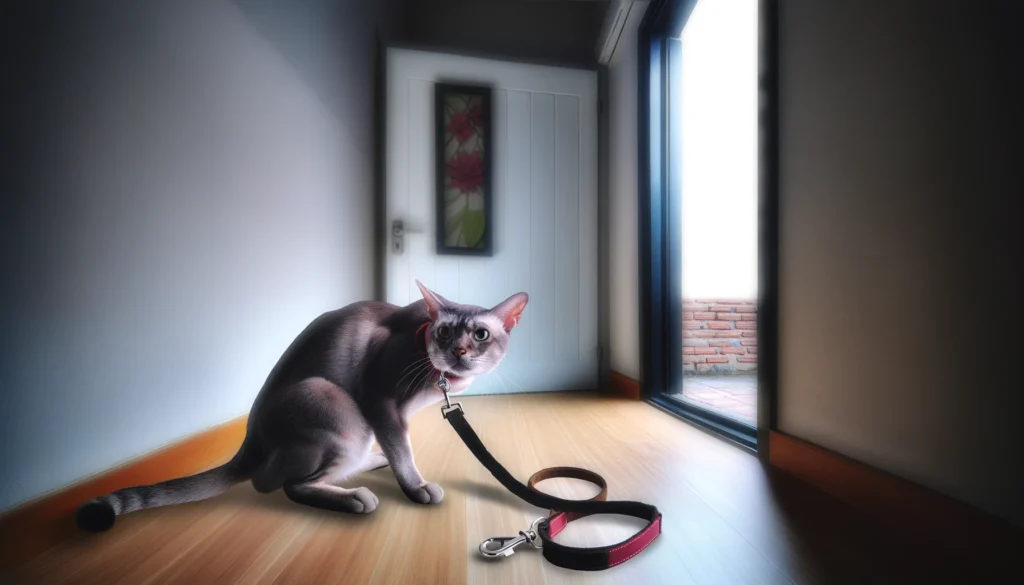
Stress and Fear is reflected in the cat’s body language
It’s important to recognize that not all cats are cut out for the leash life. For some, the experience can be overwhelming, leading to fear, stress, or even aggressive behavior.
Respecting your cat’s individual personality and comfort level is key, and it’s crucial to understand that for these cats, indoor adventures might be more their style.
2. Risk of Injury
The leash can be a lifeline or a liability. There’s a potential risk for injuries if a cat attempts to flee from perceived dangers or gets tangled in their harness.
Ensuring the harness fits correctly and keeping a vigilant eye on your surroundings can mitigate these risks, but they’re important considerations for any cat explorer.
3. Health Risks & Diseases
The call of the wild also introduces less welcome elements, such as exposure to pathogens and parasites thriving in outdoor environments, some of which can also be transmitted to humans.
Regular check-ups, vaccinations, and preventive treatments are essential shields against these risks, ensuring your cat’s outdoor adventures don’t lead to unwelcome guests.
Example: Campylobacteriosis in cats is a gastrointestinal condition caused by Campylobacter bacteria, leading to symptoms like diarrhea and abdominal pain. While some cats may show no signs and act as carriers, the infection is notably contagious, posing risks to other pets and humans.
Alternatives to Cat Leash Walking
If outdoor adventures don’t suit your cat, there’s still plenty you can do to keep them sharp and fit indoors. Interactive play, using toys that mimic prey movements like feather wands or laser pointers, activates their natural hunting instincts.
Don’t overlook the importance of cat furniture for physical activity. Items such as climbing trees, window perches, scratching posts, and shelving dedicated to exploration can turn your home into a dynamic playground, encouraging your cat to climb, jump, and stretch.
Additionally, cat wheels are an excellent addition for the most energetic cat breeds like Bengals, providing a unique outlet for their boundless energy and keeping them engaged.
Final Thoughts on Leash-Walking Your Feline Companion
Walking a cat on a leash isn’t just about stepping outside; it’s about opening a door to a world of sensory enrichment and shared adventures, provided it’s done with mindfulness and respect for your cat’s needs.
It’s a journey that requires patience, preparation, and a deep understanding of your feline friend. As you consider embarking on this path, remember that the comfort and safety of your cat come first, always.
Meet Sean, a fintech whiz with a penchant for pet purrs and blockchain buzz. After a decade of fintech feats, Sean’s tech talents leaped from ledger lines to litter lines, driven by a passion for pets and a vision for a more connected pet care community. With three critter companions as co-pilots, Sean launched this blog to share a treasury of pet-friendly tech tips and tales.

